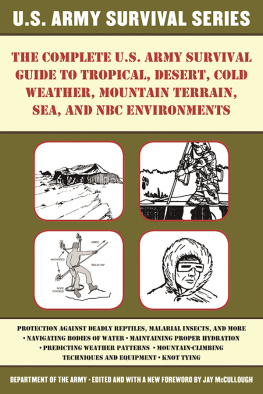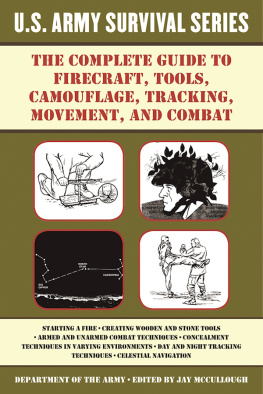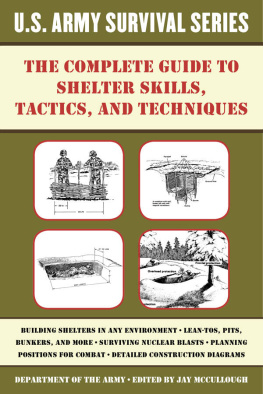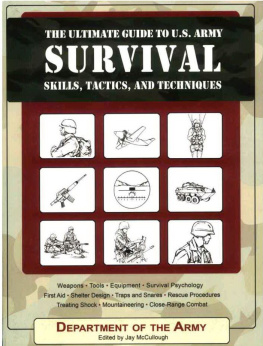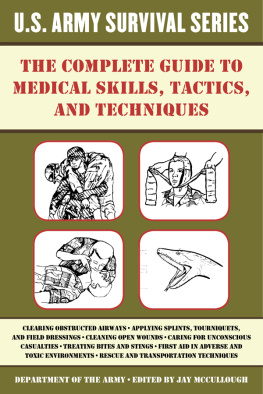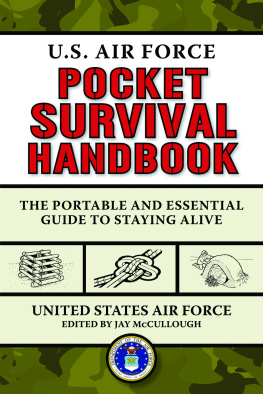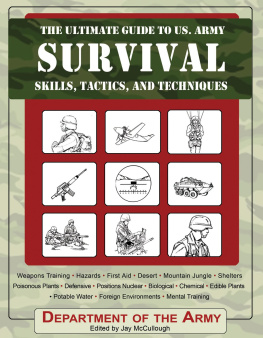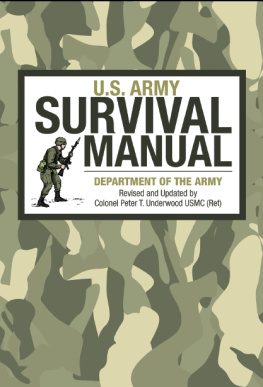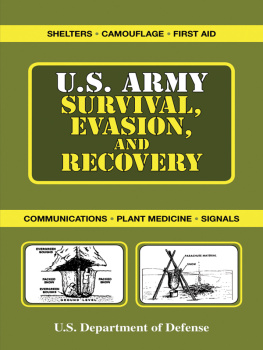Copyright 2007, 2016 by Jay McCullough
All rights reserved. No part of this book may be reproduced in any manner without the express written consent of the publisher, except in the case of brief excerpts in critical reviews or articles. All inquiries should be addressed to Skyhorse Publishing, 307 West 36th Street, 11th Floor, New York, NY 10018.
Skyhorse Publishing books may be purchased in bulk at special discounts for sales promotion, corporate gifts, fund-raising, or educational purposes. Special editions can also be created to specifications. For details, contact the Special Sales Department, Skyhorse Publishing, 307 West 36th Street, 11th Floor, New York, NY 10018 or .
Skyhorse and Skyhorse Publishing are registered trademarks of Skyhorse Publishing, Inc., a Delaware corporation.
Visit our website at www.skyhorsepublishing.com.
10 9 8 7 6 5 4 3 2 1
Library of Congress Cataloging-in-Publication Data is available on file.
Cover design by Tom Lau
Print ISBN: 978-1-5107-0745-0
Ebook ISBN: 978-1-5107-0750-4
Printed in the United States of America
Table of Contents
Introduction
Although we are an incredibly adaptive and widespread species, all humans have certain criteria for survival, and the many habitats where we liveor may find ourselvesemphasize some criteria over others. Since the U.S. Army is global in nature, it has seen fit to train its soldiers in a variety of possible combat environments: The deserts of the Middle East; the jungles of Southeast Asia, Africa, or South America; the polar conditions of Alaska and Northern Europe; the mountain ranges of Afghanistan; as well as conditions at sea.
Here we find the tips, tactics, and techniques of basic survival in these environments, culled from the U.S. Armys own training manuals, and drawn from decades of hard-won practical experience. the best chance for survival anticipates the problems these environments present, and the primary way to achieve that is prior familiarity with those problems and how to solve them. In these pages we find out how to deal with sharks, how to begin rappelling, how and where to get water in the desert, how to treat fungal diseases, and over and above, how to face the many challenges to survival and comfort in those extreme conditions: nuclear, biological, and chemical environments.
There is no substitute for practical training. If we would be prepared for any eventuality, as the Army has seen to do with its training manuals, it would be wise to commit these techniques to memory, and to practice them as necessary.
Jay McCullough
April 2016
North Haven, Connecticut
CHAPTER 1
TROPICAL SURVIVAL
Most people think of the tropics as a huge and forbidding tropical rain forest through which every step taken must be hacked out, and where every inch of the way is crawling with danger. Actually, over half of the land in the tropics is cultivated in some way.
A knowledge of field skills, the ability to improvise, and the application of the principles of survival will increase the prospects of survival. Do not be afraid of being alone in the jungle; fear will lead to panic. Panic will lead to exhaustion and decrease your chance of survival.
Everything in the jungle thrives, including disease germs and parasites that breed at an alarming rate. Nature will provide water, food, and plenty of materials to build shelters.
Indigenous peoples have lived for millennia by hunting and gathering. However, it will take an outsider some time to get used to the conditions and the nonstop activity of tropical survival.
TROPICAL WEATHER
High temperatures, heavy rainfall, and oppressive humidity characterize equatorial and subtropical regions, except at high altitudes. At low altitudes, temperature variation is seldom less than 10 degrees C and is often more than 35 degrees C. At altitudes over 1,500 meters, ice often forms at night. The rain has a cooling effect, but when it stops, the temperature soars.
Rainfall is heavy, often with thunder and lightning. Sudden rain beats on the tree canopy, turning trickles into raging torrents and causing rivers to rise. Just as suddenly, the rain stops. Violent storms may occur, usually toward the end of the summer months.
Hurricanes, cyclones, and typhoons develop over the sea and rush inland, causing tidal waves and devastation ashore. In choosing campsites, make sure you are above any potential flooding. Prevailing winds vary between winter and summer. The dry season has rain once a day and the monsoon has continuous rain. In Southeast Asia, winds from the Indian Ocean bring the monsoon, but it is dry when the wind blows from the landmass of China.
Tropical day and night are of equal length. Darkness falls quickly and daybreak is just as sudden.

Figure 1-1: Five layers of tropical rain forest vegetation.

Figure 1-2: Jungle Regions of the World
TYPES OF JUNGLES
The jungle environment includes densely forested areas, grasslands, cultivated areas, and swamps. Jungles are classified as primary or secondary jungles based on the terrain and vegetation.
PRIMARY JUNGLES
These are tropical forests. Depending on the type of trees growing in these forests, primary jungles are classified either as tropical rain forests or as deciduous forests.
Tropical Rain Forests. The climate varies little in rain forests. You find these forests across the equator in the Amazon and Congo basins, parts of Indonesia, and several Pacific islands. Up to 3.5 meters of rain fall evenly throughout the year. Temperatures range from about 32 degrees C in the day to 21 degrees C at night.

Tropical Rain Forest

Deciduous Forest
There are five layers of vegetation in this jungle. Where untouched by man, jungle trees rise from buttress roots to heights of 60 meters. Below them, smaller trees produce a canopy so thick that little light reaches the jungle floor. Seedlings struggle beneath them to reach light, and masses of vines and lianas twine up to the sun. Ferns, mosses, and herbaceous plants push through a thick carpet of leaves, and a great variety of fungi grow on leaves and fallen tree trunks.
Because of the lack of light on the jungle floor, there is little undergrowth to hamper movement, but dense growth limits visibility to about 50 meters. A wet and soggy surface make vehicular traffic difficult. Foot movement is easier in tropical forests than in other types of jungle. You can easily lose your sense of direction in this jungle, and it is extremely hard for aircraft to see you.
Deciduous Forests. These are found in semitropical zones where there are both wet and dry seasons. In the wet season, trees are fully leaved; in the dry season, much of the foliage dies. Trees are generally less dense in deciduous forests than in rain forests. This allows more rain and sunlight to filter to the ground, producing thick undergrowth. In the wet season, with the trees in full leaf, observation both from the air and on the ground is limited. Movement is more difficult than in the rain forest. In the dry season, however, both observation and traffic ability improve.

